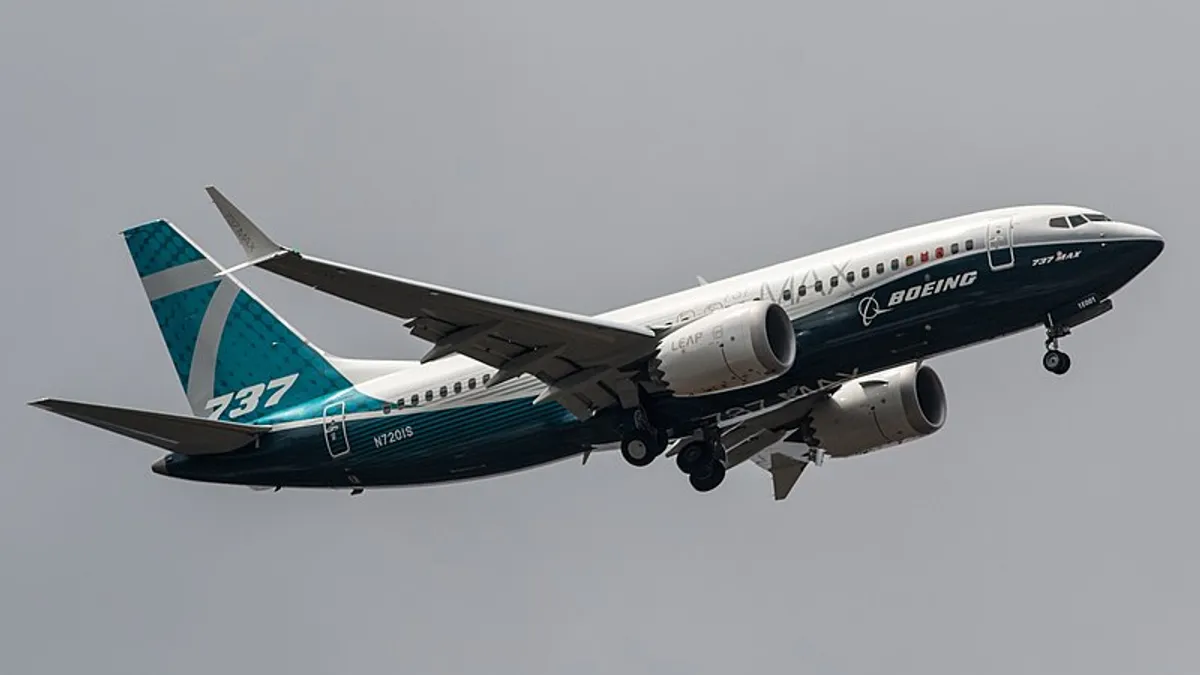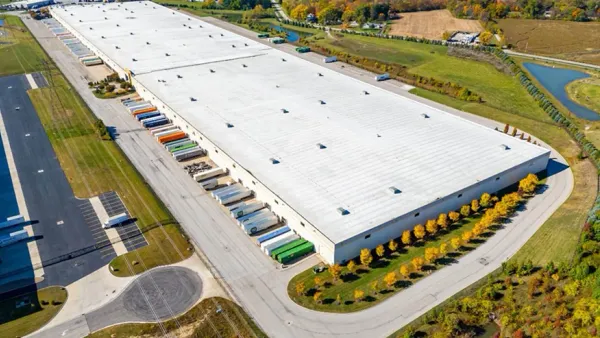Dive Brief:
- The last mile of the Boeing 737 Max supply chain is once again churning. The Federal Aviation Administration cleared the model to return to service in November, which allowed the company to begin customer deliveries last month, according to executives on the manufacturer's earnings call earlier this week.
- "Last quarter, we shared with you that we had about 450 737 MAX aircraft built and stored in inventory," Boeing Chief Financial Officer Greg Smith said. "With deliveries of 27 aircraft in December and now 40 to date, this number has been reduced to approximately 410 aircraft in inventory."
- Delivering finished inventory will be the company's priority before increasing production as the pandemic has decreased demand for new aircraft. It plans to increase 737 Max production to 31 per month by 2022, after manufacturing the aircraft "at very low rates" in Q4 2020, CEO David Calhoun said.
Dive Insight:
Boeing 737 Max airplanes started accumulating in storage after the FAA grounded the aircraft in 2019 following two deadly crashes — in 2018 and 2019 — that killed 346 people. Boeing responded, in part, by taking steps to slow its supply chain and cut production levels, first from 52 per month to 42, but then further.
The manufacturer has relied on multiple storage locations for maintaining its inventory of aircraft, which, depending on the model, have a 117-foot wingspan and are 120 feet long. This included Boeing Field in Renton, Washington; Moses Lake, Washington; and Boeing’s San Antonio maintenance facility.
Boeing's suppliers faced similar inventory backups and production cutbacks as a result of the grounding.
Spirit AeroSystems, Boeing's largest supplier, dramatically cut its production levels. It delivered 15 737 shipsets in the third quarter, down from 154 during the same quarter in 2019, according to its latest earnings presentation.
Spirit AeroSystems currently has a backlog of 128 shipsets for the 737 model, which it plans to whittle down before matching Boeing's production rate, executives said in November.
"We will lag Boeing's production rates by about five units per month and plan to decrease the inventory of shipsets to a permanent buffer of 20 to 25 units," Spirit AeroSystems CEO Tom Gentile said on the company's latest earnings call.
The downturn in demand resulted in Spirit AeroSystems cutting 8,000 employees from its commercial aviation programs — a 44% reduction, according to Gentile. It shuttered one factory location.
"Most recently, we announced the closure of our McAlester, Oklahoma site, which does 3-axis machining and assembly for Boeing programs," he said. "Most of the work from McAllister will now move to our Tulsa and Wichita facilities."
But just as Boeing begins to clear the inventory for its 737, it announced another production backlog. Boeing has been dealing with delivery delays with its 787 models as it also completes inspections that could last "a few more weeks," Calhoun said.
"We're looking forward to resuming 787 deliveries to our customers, but as I discussed, there's still work to be done," he said. "Based on what we know today, we expect 787 deliveries to resume later this quarter."














